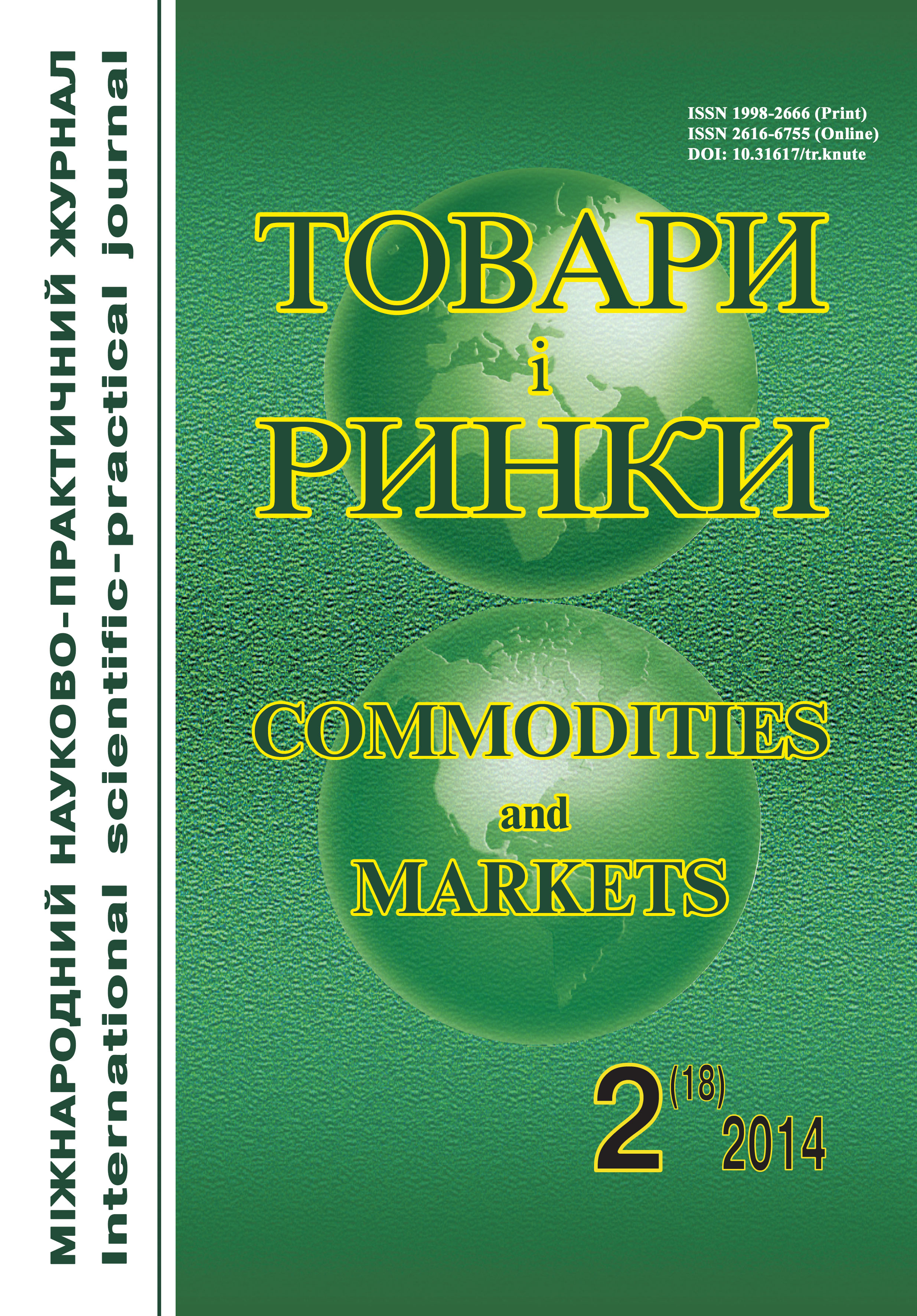Chemical and fractional composition of the powder made of the walnut leaves
Keywords:
leaves of walnut, powder from the leaves of the walnut, minerals, macronutrients, vitamins, amino acids, toxic substancesAbstract
Background. These days there is an increased interest in the effective and safe raw materials that have high nutritional and biological value, promising as recipe ingredients of foods for special dietary use. Such materials include the products derived from the leaves of the walnut Juglans regia.
The aim of the research is to study chemical and fractional composition of the leaves of the walnut in order to determine the possibility of using its powder in food technologies.
Material and methods. The studies used walnut leaves harvested in conditionally clean ecological zone in Ivano-Frankivsk region (town Kosiv).
Content of water, ash, sugar, fiber, proteins and lipids was defined in the powder from the leaves of the walnut. Quantitative and qualitative composition of amino acids was identified in amino acid analyzer AAA-339M. Potassium, Сalcium, Magnesium, Iron, Zinc, Copper, Iodine were investigated with Roentgen spectrometer Lab Center XRF-1800; vitamin B1 – Fluor metric method, B6 – by enzyme immunoassay one [6–12].
The content of toxic elements: Lead, Cadmium, Mercury was determined [14–16].
Naphthoquinone was determined by extraction with ethanol in a water bath at Soxhlet apparatus. The content of tannins was determined with gallic acid with chromatographic column.
Results. The research found that the moisture content in the powder from the leaves of the walnut is an average of 11 %; total protein content 7.7–8.0 %, lipids – within one percent, carbohydrates – 35.0–37.0 %, total mineral content – 8.0–8.7 %.
Amino acid composition of protein powder from the leaves of walnut are 10 essential and 8 nonessential amino-acids.
The total content of tannins in the dry leaves of the walnut is an average – 12.5–13.5 % chlorogenic acid – 0.5–1.0 %, naphthoquinones (juglone) – 5.0 % flavonoids, within 1.0 %.
Conclusion. Based on studies of chemical and fractional composition of the powder from the leaves of the walnut we may suggest the desirability and possibility of its application in food technology, in particular as part of the flour mixture.
References
Enikeeva R. A. K harakteristike mikrodiagnosticheskih priznakov oreha greckogo list'ev / R. A. Enikeeva, T. A. Sokol'skaja, T. D. Dargaeva // "Razrabotka issledovanie i marketing novoj farmacevticheskoj produkcii" : sb. nauch. tr. — Pjatigorsk, 2007. — C. 44—46.
Zhuravskaja E. I. Greckij oreh v zapadnyh oblastjah USSR / E. I. Zhuravskaja // Lesnoe hozjajstvo. — 1961. — Vyp. 7. — S. 69.
Kenig A. E. Oreh greckij v lesnyh kul'turah Mogilev-Podol'skogo Leshozaga Vinnickoj oblasti / A. E. Kenig : tez. dokl. ІІ nauch. konf. aspirantov i molodyh uchenyh UkrNIILH USSR. — Vinnica : UkrNIILH USSR, 1962. — S. 75.
Sokol'skaja T. A. Nastojka matrichnaja gomeopaticheskaja list'ev greckogo oreha v gomeopaticheskoj praktike / T. A. Sokol'skaja, R. A. Enikeeva : tez. dokl. XVI Moskovskoj mezhdunar. gomeopaticheskoj konf. [Razvitie gomeopaticheskogo metoda v sovremennoj medicine], (Moskva, 27—29 janv. 2007 g.). — M., 2006. — S. 118—119.
DSTU 3355–96. Produkcija sil's'kogospodars'ka roslynna. Metody vidboru prob u procesi karantynnogo ogljadu ta ekspertyzy. — K. : Derzhspozhyv¬standart Ukrai'ny, 1997. — 14 s.
DSTU GOST 29144:2009. Zerno i zernoprodukty. Vyznachennja vologosti (bazovyj kontrol'nyj metod). — K. : Derzhspozhyvstandart Ukrai'ny, 2009. — 8 s.
DSTU ISO 2171:2009. Zernovi, bobovi ta produkty i'h pomelu. Vyznachennja zagal'noi' zoly metodom ozoljuvannja. — K. : Derzhspozhyvstandart Ukrai'ny, 2011. — 14 s.
DSTU 5059:2008. Vyroby kondyters'ki. Metody vyznachennja cukriv. — K. : Derzhspozhyvstandart Ukrai'ny, 2010. — 36 s.
DSTU ISO 6865:2004. Kormy dlja tvaryn. Vyznachennja vmistu syroi' klitkovyny metodom promizhnogo fil'truvannja. — K. : Derzhspozhyvstandart Ukrai'ny, 2006. — 14 s.
DSTU 7169:2010. Kormy, kombikormy, kombikormova syrovyna. Metody vyznachennja vmistu azotu i syrogo protei'nu. — K. : Derzhspozhyvstandart Ukrai'ny, 2011. — 22 s.
DSTU ISO 13903:2009. Kormy dlja tvaryn. Metod vyznachennja vmistu aminokyslot (ISO 1393:2005, IDT). — K. : Derzhspozhyvstandart Ukrai'ny, 2009. — 13 s.
DSTU ISO 6492:2003. Kormy dlja tvaryn. Vyznachennja vmistu zhyru. — K. : Derzhspozhyvstandart Ukrai'ny, 2005. — 12 s.
GOST 29138–91. Muka, hleb i hlebobulochnye izdelija pshenichnye vitaminizirovannye. Metod opredelenija vitamina V1 (tiamina). — M. : Standartinform, 1993. — 7 s.
DSTU ISO 11212-3–2004. Krohmal' ta pohidni produkty. Vmist vazhkyh metaliv. Chastyna 3. Vyznachennja vmistu svyncju metodom atomnoi' absorbcijnoi' spektrometrii' z elektrotermichnoju atomizacijeju. — K. : Derzhspozhyvstandart Ukrai'ny, 2006. — 10 s.
DSTU ISO 11212-4:2004. Krohmal' ta pohidni produkty. Vmist vazhkyh metaliv. Chastyna 4. Vyznachennja vmistu kadmiju metodom atomnoi' absorbcijnoi' spektrometrii' z elektrotermichnoju atomizacijeju. — K. : Derzhspozhyvstandart Ukrai'ny, 2006. — 10 s.
DSTU ISO 11212-2–2004. Krohmal' ta pohidni produkty. Vmist vazhkyh metaliv. Chastyna 2. Vyznachennja vmistu rtuti metodom atomnoi' absorbcijnoi' spektrometrii'. — K. : Derzhspozhyvstandart Ukrai'ny, 2005. — 10 s.
Bandjukova V. A. Primenenie cvetnyh reakcij dlja obnaruzhenija flavonoidov putem hromatografii na bumage / V. A. Bandjukova // Rastitel'nye resursy. — 1965. — T. 4. — S. 591—599.



